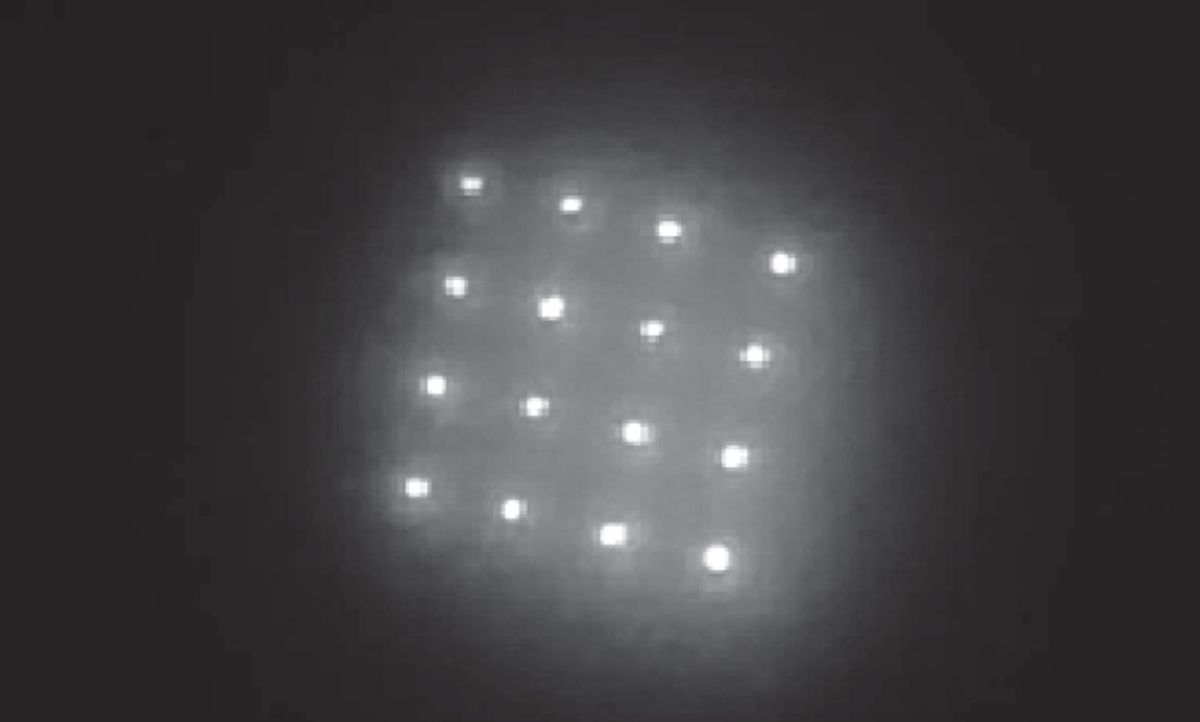I remember a faded yellow booklet, about the size of a wallet, that my mother used to pull out once a year at the doctor’s office to record my vaccines. Today, nurses document my children’s vaccination history in electronic health records that will likely follow them to adulthood.
To eradicate a disease—such as polio or measles—healthcare workers need to know who was vaccinated and when. Yet in developing countries, vaccination records are sparse and, in some cases, non-existent. For example, during a rural vaccination campaign, a healthcare worker may mark a child’s fingernail with a Sharpie, which can wash or scrape off within days.
Now, a team of MIT bioengineers has developed a way to keep invisible vaccine records under the skin. Delivered through a microneedle patch, biocompatible quantum dots embed in the skin and fluoresce under near-infrared light—creating a glowing trace that can be detected at least five years after vaccination. The work is described today in the journal Science Translational Medicine.
“We started thinking about using a dye that’s not visible by the naked eye,” but that would be persistent and inexpensive to detect, says senior paper author Ana Jaklenec, a research scientist at MIT’s Koch Institute for Integrative Cancer Research. Together with MIT’s Robert Langer, she came up with a solution—quantum dots.
What are quantum dots?
Quantum dots are small, semiconducting nanoparticles, in the range of 2 to 10 nanometers, with unique chemical and physical properties due to their size. Notably, they absorb light of one wavelength and efficiently convert it to light of another wavelength. Quantum dots are being explored for medical use as biological sensors and probes, and commercially in solar panels, displays, and televisions.
To create a safe, lasting dye to inject under the skin, the scientists skipped traditional lead or cadmium quantum dots, which can be toxic, and instead created nanoparticles with a copper core and a shell of aluminum and zinc sulfide, which is safe and stable in the skin and resists bleaching from the sun, says Jaklenec.

The dots were then loaded into a microneedle patch, a square with an array of tiny needles that deliver nanoparticles into the skin in a desired pattern—a square, circle, etc.—then dissolve after delivery, so there are no sharp objects to be disposed of afterward.
In the current paper, the scientists applied the patch to the skin of rats, and were able to detect the dots using a smartphone modified with a filter to detect near-infrared light.
The quantum dot signal remained strong and detectable in the rats for nine months after application (when the experiment ended), and the rats showed no side effects. The team also applied the patches to pieces of pig and human cadaver skin of various skin tones. The light from the dots was stable and detectable even after a stint in a solar simulator, which simulated sun exposure for a five-year period.
Finally, the researchers co-delivered a polio vaccine with the quantum dots in rats, and found that the dye did not interfere with the vaccine’s function—the rats still produced a protective immune response.
The team is now working on a way to encode data, such as the date of application, into the quantum dot array, says Jaklenec. They’re also planning a study, expected to begin in early 2020, to survey populations in Kenya, Bangladesh, and Malawi about the acceptability of the technology, such as how and where it will be most useful, and if parents will be onboard.
And while Jaklenec and the team are developing the quantum dot technology for a medical purpose, she admits there is probably a commercial market too—when people heard about the technology, they often ask about getting an invisible tattoo.
But first, a toxicology study in rodents and human safety trials in adults will need to demonstrate the long-term safety of the technology. “If funding is there, that could happen in the next one to two years,” says Jaklenec. The work is funded by the Bill and Melinda Gates Foundation.
A version of this post appears in the February 2020 print issue as “Quantum-Dot Tattoos Store Vaccine History.”
Megan is an award-winning freelance journalist based in Boston, Massachusetts, specializing in the life sciences and biotechnology. She was previously a health columnist for the Boston Globe and has contributed to Newsweek, Scientific American, and Nature, among others. She is the co-author of a college biology textbook, “Biology Now,” published by W.W. Norton. Megan received an M.S. from the Graduate Program in Science Writing at the Massachusetts Institute of Technology, a B.A. at Boston College, and worked as an educator at the Museum of Science, Boston.



